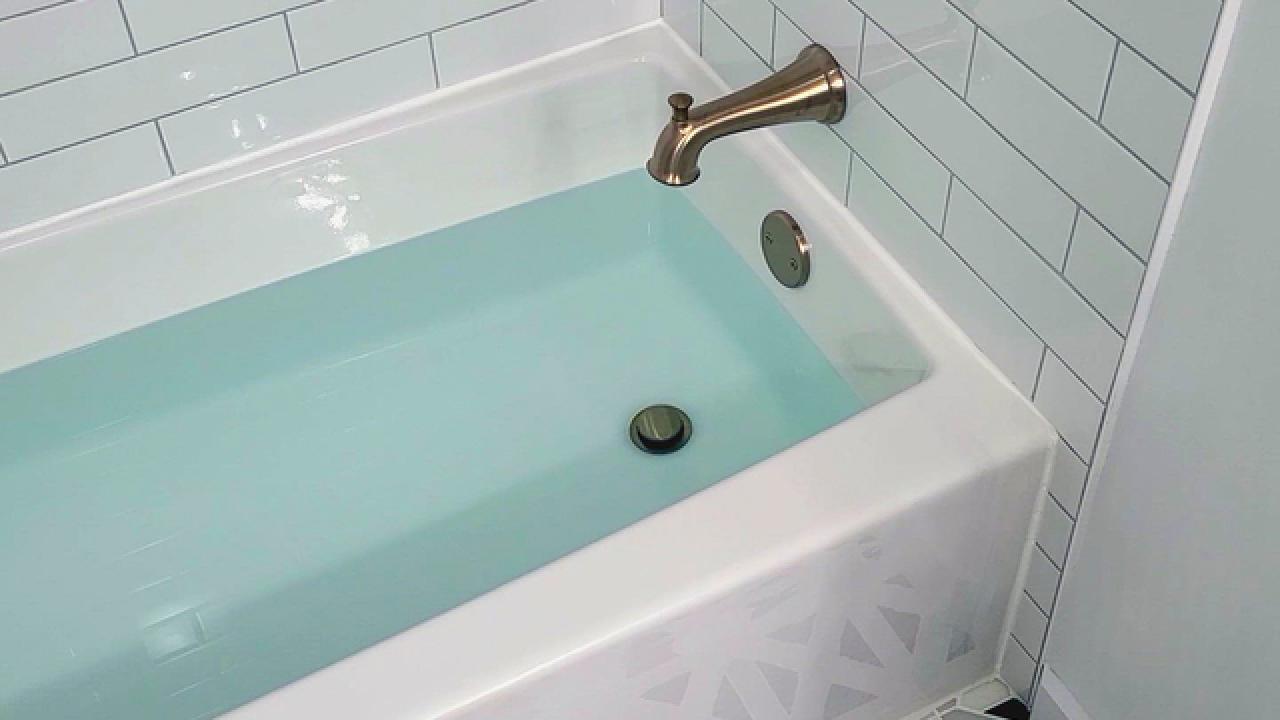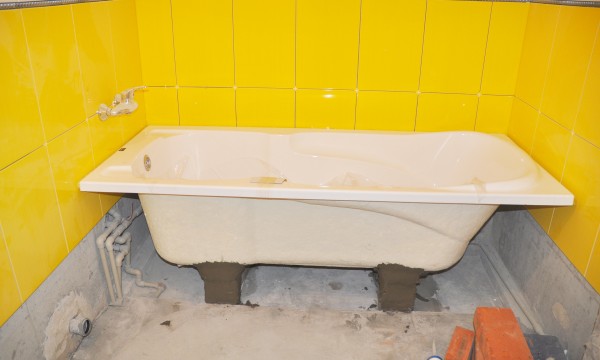Getting Familiar with Plumbing: Your Starting Point for When Installing a Bathtub
Getting Familiar with Plumbing: Your Starting Point for When Installing a Bathtub
Blog Article
They are making a number of great pointers related to Installing A Bathtub in general in the article below.

Installing a bath tub isn't precisely rocket science, but it does call for solid plumbing, woodworking, and also often, tiling abilities. Replacing an old bathtub with a brand-new one is also a reasonably tough task. If the old tub is conveniently easily accessible, the job can move quickly; if you need to open up a wall to eliminate the old tub and also place the brand-new bath tub, the task is a lot harder. In either instance, the project is within a home handyman's abilities, although you will require a helper to vacate the old tub as well as set in the new one. Ensure you have actually certified on your own for the work and also are comfortable attempting it. Rather than employing a service provider to take control of a halfway-completed task, it is far better to consider employing one prior to you start. Possibilities are you may need a professional plumber to make tube links.
This write-up will certainly assist you set up a new bath tub in your washroom if you have actually already bought a brand-new bathtub and also do not require to change the setup of your previous water pipes.
Your devices as well as material list ought to comprise the following:
Removing Old Touches
If you require to change old faucets with brand-new ones as a part of your setup, after that the first thing you must do is disconnect the supply of water. After doing so, turn on the taps to drain any type of water staying in the system. The process of getting rid of the existing faucets can be quite troublesome due to the restricted accessibility that is usually the instance.
Utilize a container wrench (crowsfoot spanner) or a tap tool to undo the nut that attaches the supply pipelines to the faucets. Have a towel all set for the continuing to be water that will come from the pipes. Once the supply pipes have actually been eliminated, utilize the same tool to loosen up the nut that holds the faucets onto the bath/basin. You will need to quit the single taps from turning throughout this process. Once the faucets have actually been eliminated, the holes in the bath/basin will need to be cleaned up of any type of old securing substance.
Prior to carrying on to fit the new faucets, compare the pipe links on the old faucets to the brand-new faucets. If the old taps are longer than the brand-new faucets, then a shank adapter is required for the brand-new taps to fit.
Suitable New Touches
If the tails of the brand-new taps are plastic, after that you will certainly need a plastic port to prevent damage to the thread. One end of the port fits on the plastic tail of the faucet and also the various other end provides a connection to the existent supply pipes.
If you need to fit a monobloc, after that you will call for lowering couplers, which attaches the 10mm pipeline of the monobloc to the standard 15mm supply pipeline.
Next off, place the tap in the placing hole in the bath/basin making certain that the washers remain in location in between the faucet and also the sink. Protect the faucet in place with the supplier supplied backnut. Once the faucet is securely in place, the supply pipelines can be attached to the tails of the taps. The faucets can either be linked by using corrugated copper piping or with normal faucet connectors. The former kind should be attached to the faucet ends initially, tightening just by hand. The supply pipes can later be attached to the various other end. Tighten both ends with a spanner after both ends have been attached.
Mounting the Bath tub
Making use of both wood boards under its feet, put the bathtub in the needed setting. The wooden boards are handy in uniformly spreading out the weight of the bath tub over the location of the boards as opposed to concentrating all the weight onto 4 small points.
The next goal is to make certain that the tub is leveled all round. This can be achieved by examining the spirit level and also changing the feet on the bath tub till the spirit level checks out degree.
To set up taps, fit the bottom of the furthest versatile tap connector to the suitable supply pipe by making a compression sign up with; then do the very same for the various other faucet.
Turn on the water supply and check all joints and brand-new pipework for leakages and also tighten them if needed. Load the bathtub and additionally check the overflow electrical outlet as well as the normal electrical outlet for leaks.
Ultimately, deal with the bath paneling as described in the supplier's user's manual. Tiling and securing around the bathtub must wait up until the bathtub has been made use of a minimum of once as this will certainly settle it into its final placement.
Preparing for the Setup
First of all, the sustaining frame supplied with the bathroom ought to be fitted (if called for) according to the maker's instructions. Next off, fit the faucets or mixer to the bath tub. When suitable the tap block, it is very important to see to it that if the tap comes with a plastic washer, it is fitted in between the bath as well as the taps. On a plastic bathroom, it is also sensible to fit a supporting plate under the taps unit to prevent strain on the bathtub.
Fit the flexible tap ports to the bottom of both faucets utilizing 2 nuts as well as olives (in some cases supplied with the bathtub). Fit the plug-hole outlet by smearing mastic filler round the sink electrical outlet opening, and after that pass the electrical outlet with the hole in the bath. Use the nut provided by the producer to fit the plug-hole. Examine the plug-hole electrical outlet for an inlet on the side for the overflow pipe.
Next off, fit the end of the adaptable overflow pipeline to the overflow outlet. Afterwards, screw the pipeline to the overflow face which need to be fitted inside the bath. See to it you make use of all of the supplied washing machines.
Connect the catch to the bottom of the waste outlet on the bathtub by winding the thread of the waste electrical outlet with silicone mastic or PTFE tape, and also screw on the trap to the outlet. Link the bottom of the overflow tube in a similar manner.The bath must now be ready to be fitted in its last position.
Tiling Around the Bathtub
In the area where the bath fulfills the floor tile, it is necessary to seal the joins with a silicone rubber caulking. This is very important as the fitting can relocate sufficient to fracture an inflexible seal, causing the water to permeate the wall surface in between the bath and the tiling, causing problems with dampness and feasible leakages to the ceiling below.
You can pick from a selection of coloured sealers to blend in your components as well as fittings. They are marketed in tubes as well as cartridges, and also can securing spaces up to a size of 3mm (1/8 inch). If you have a bigger gap to fill up, you can fill it with twists of drenched paper or soft rope. Remember to constantly load the bathtub with water before securing, to permit the activity experienced when the tub is in use. The sealant can fracture fairly early if you do not take into consideration this activity before sealing.
Conversely, ceramic coving or quadrant floor tiles can be made use of to border the bath or shower tray. Plastic strips of coving, which are easy to use as well as reduce to size, are likewise quickly readily available on the marketplace. It is advisable to fit the tiles using waterproof or water resistant glue and grout.
Bathtub Installation
How Important Is A Bathtub To Your Home?
High-quality baths, showers, and other bathroom updates are necessary when considering a smart investment in your home. It’s a room that you go to every day and one that is constantly being used by guests.The bathroom is one of the top trafficked rooms in a home and also one of the most valuable in terms of home resale.
Install Piping Before Tub
You will be using your existing drain and waste vent system, but pipes required include the hot and cold water supply lines and a pipe leading to a shower head. A mixing valve and shower head are also needed. Air chambers may be required.
Position the Tub
Lower the tub into place so that the continuous flange fits against the wall studs and rests on 1’x4' or 2’x4' supports. Anchor the tub to the enclosure with nails or screws inserted through the flanges into the studs.
NOTE: Remember, bathtubs and shower stalls may require support framing. A bathtub filled with water is extremely heavy, so check building codes and framing support before installing the tub.
Assemble Drain Connections
Assemble the bathtub drain connections by connecting the tub overflow with the tub drain above the trap, not beyond it. The trap will have a compression fitting that screws over the arm of the overflow assembly.
Place a Pipe For the Shower Head
First, locate a brass female threaded winged fitting and attach it to a framing support via a screw or a nail. Then run a pipe up the wall for the shower head. Sweat or solder the other side of the brass fitting to the top of the pipe.
Attaching Hot and Cold Water Lines
Attach your water lines for both hot and cold by sweating these directly into the hot and cold ports of the mixing valve. The mixing valve will be how water enters the tub’s system, not by the pipes themselves.
Install the Spout
Extend a piece of 1/2 inch pipe, or whichever length is specified in the manufacturer’s instructions, for the tub spout. Sweat on a male threaded fitting at the end of the pipe or use a brass nipple of the proper length and a 1/2 inch cap.
NOTE: At this point you should have your rough-in plumbing work inspected before proceeding further.
Check For Leaks
Restore the water pressure and check the drain connection and the supply pipes for any sign of leaking.
estore the Bathroom Wall
Replace the wall with moisture-resistant drywall as a base for your wall covering. Seal the joints between the wall and your new tub with silicone caulk as protection against water seepage.
https://www.berkeys.com/2016/12/02/bathtub-installation-dallas/

We hope you enjoyed our topic about A Step-by-Step Guide to Installing a Bathtub. Many thanks for taking the time to read through our article. Enjoyed reading our write-up? Please share it. Help others locate it. Thanks a lot for going through it.
Estimate Report this page